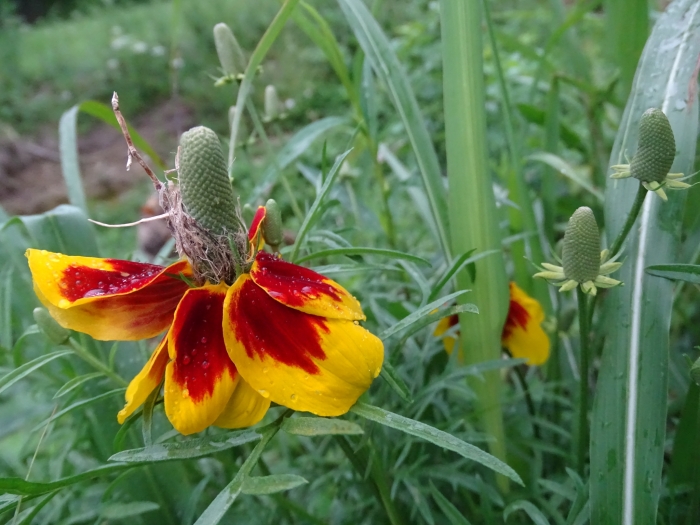Upright Prairie Coneflower
(Ratibida columnifera)
Upright Prairie Coneflower (Ratibida columnifera)
/
/

Nathan May
CC BY 4.0


















































Estimated Native Range
Summary
Upright prairie coneflower is valued for its unique flower form and its ability to attract pollinators such as bees and butterflies. It is often used in wildflower gardens, naturalized areas, and as a border plant. This drought-tolerant species prefers full sun and can adapt to a range of soil types, though it flourishes in well-drained soils. It is relatively low-maintenance, requiring minimal supplemental watering once established. While generally pest-free, it can occasionally suffer from fungal diseases in humid conditions.CC BY-SA 4.0
Plant Description
- Plant Type: Herb
- Height: 1-3 feet
- Width: 1-1.5 feet
- Growth Rate: Moderate
- Flower Color: Orange, Red, Yellow
- Flowering Season: Summer
- Leaf Retention: Deciduous
Growth Requirements
- Sun: Full Sun
- Water: Medium
- Drainage: Fast, Medium, Slow
Common Uses
Bee Garden, Bird Garden, Border Plant, Butterfly Garden, Deer Resistant, Drought Tolerant, Fire Resistant, Hummingbird Garden, Low Maintenance, Showy Flowers, Street Planting
Natural Habitat
Prairies, plains, and grasslands
Other Names
Common Names: Longhead-Coneflower , Prairie-Coneflower , Redspike Mexican Hat , Thimble-Flower , Upright Prairie-Coneflower , Long-Head Coneflower , Prairie Coneflower , Länglicher Präriesonnenhut , Mexikohatt
Scientific Names: Ratibida columnifera , Ratibida columnaris , Rudbeckia columnifera , Lepachys columnaris , Rudbeckia columnaris , Lepachys columnifera , Ratibida columnifera var. columnifera , Obeliscaria columnaris , Ratibida columnaris f. denudata , Ratibida columnaris f. pulcherrima
GBIF Accepted Name: Ratibida columnifera (Nutt.) Wooton & Standl.